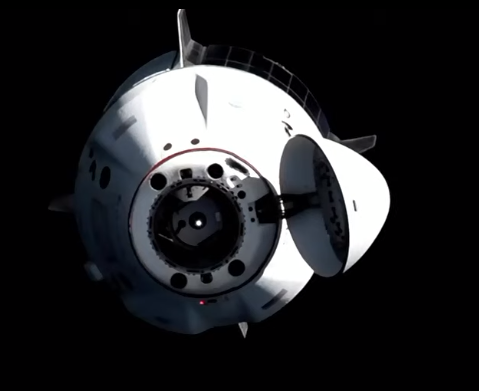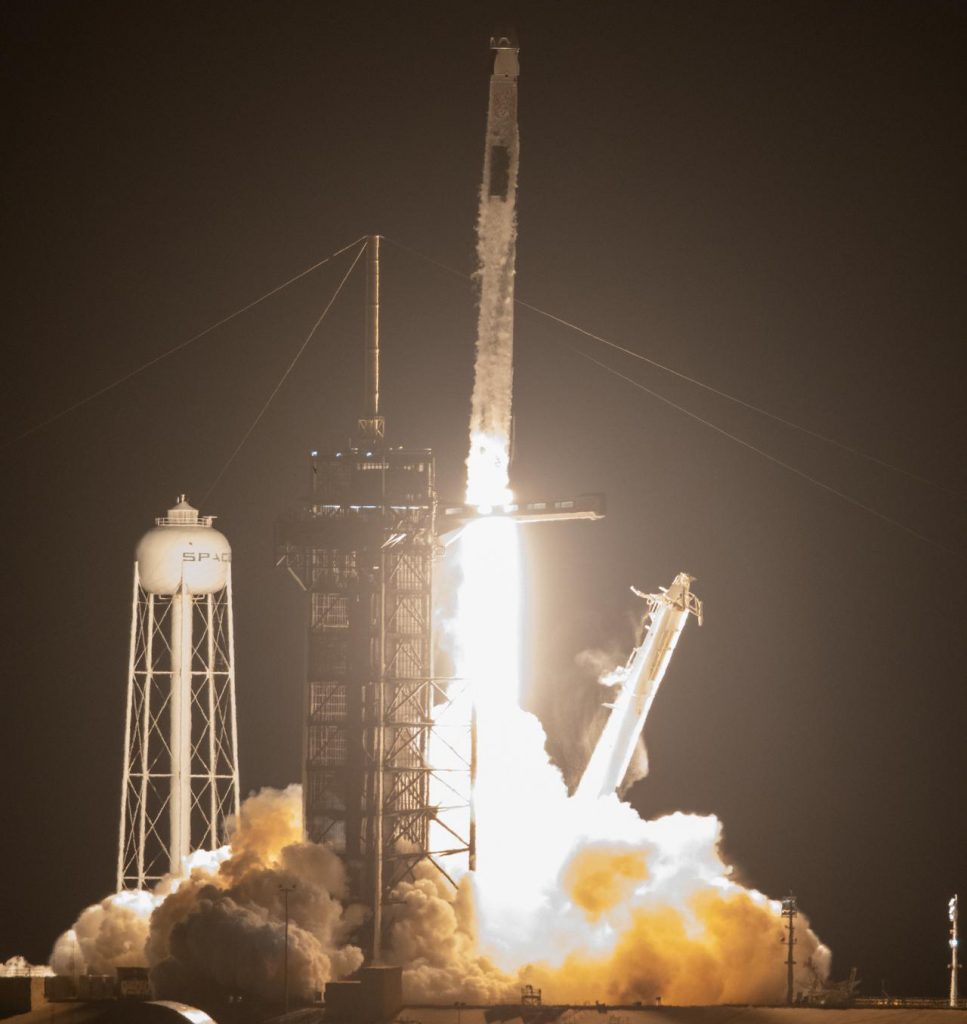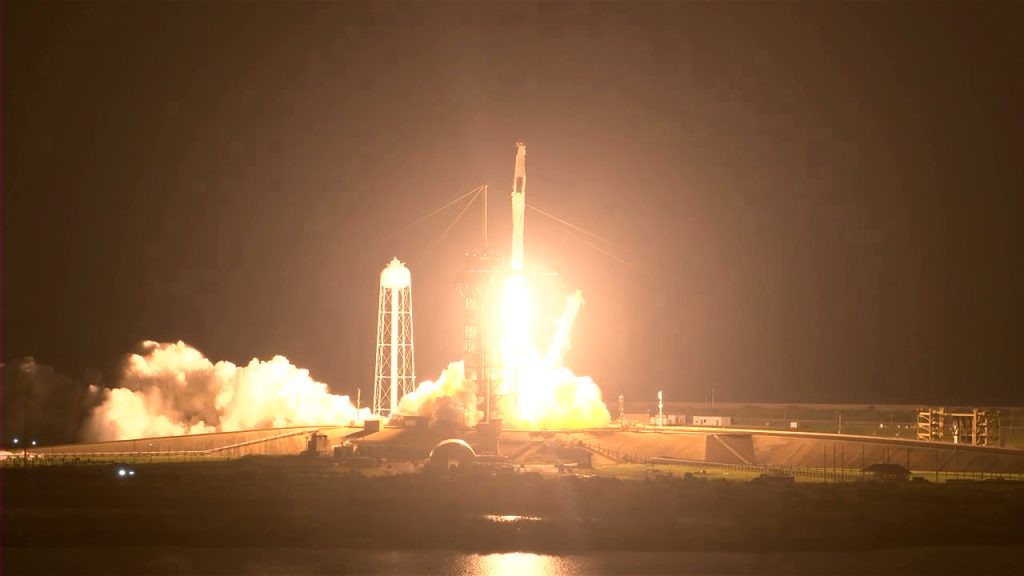NASA’s SpaceX Crew-2 astronauts safely splashed down in the Gulf of Mexico off the coast of Florida Monday aboard the Crew Dragon Endeavour spacecraft, completing the agency’s second long-duration commercial crew mission to the International Space Station. The mission set a record for the longest spaceflight by a U.S. crewed spacecraft. The international crew of four spent 199 days in orbit, surpassing the 168 days set by NASA’s SpaceX Crew-1 mission earlier this year.
NASA astronauts Shane Kimbrough and Megan McArthur, JAXA (Japan Aerospace Exploration Agency) astronaut Akihiko Hoshide, and ESA (European Space Agency) astronaut Thomas Pesquet returned to Earth in a parachute-assisted splashdown at 10:33 p.m. EST off the coast of Pensacola, Florida. Crews aboard SpaceX recovery vessels successfully recovered the spacecraft and astronauts. After returning to shore, the astronauts will fly back to NASA’s Johnson Space Center in Houston.
“We’re happy to have Shane, Megan, Aki, and Thomas safely back on Earth after another successful, record-setting long-duration mission to the International Space Station,” said NASA administrator Bill Nelson. “Congratulations to the teams at NASA and SpaceX who worked so hard to ensure their successful splashdown. NASA’s Commercial Crew Program continues to demonstrate safe, reliable transportation to conduct important science and maintenance on the space station.”
The Crew-2 mission launched April 23 on a Falcon 9 rocket from NASA’s Kennedy Space Center in Florida. Crew Dragon Endeavour docked to the Harmony module’s forward port of the space station April 24, nearly 24-hours after liftoff.
Kimbrough, McArthur, Hoshide, and Pesquet traveled 84,653,119 statute miles during their mission, stayed 198 days aboard the space station, and completed 3,194 orbits around Earth.
Throughout their mission, the Crew-2 astronauts contributed to a host of science and maintenance activities, scientific investigations, and technology demonstrations. In addition, they conducted four spacewalks and multiple public engagement events while aboard the orbiting laboratory. They studied how gaseous flames behave in microgravity, grew hatch green chiles in the station’s Plant Habitat Facility, installed free-flying robotic assistants, and even donned virtual reality goggles to test new methods of exercising in space, among many other scientific activities. The astronauts took hundreds of pictures of Earth as part of the Crew Earth Observation investigation, one of the longest-running investigations aboard the space station, which contributes to tracking of natural disasters and changes to our home planet.
Kimbrough, Hoshide, and Pesquet also completed four spacewalks to install, deploy, or otherwise prepare for installation of ISS Roll-out Solar Arrays. This brought the total number of spacewalks for Kimbrough, Hoshide, and Pesquet to nine, four, and six, respectively. The fourth spacewalk, conducted by Hoshide and Pesquet on Sept. 12, was the first in the history of the space station that did not include an American or Russian.
On July 21, all four Crew-2 astronauts boarded Endeavour for a port relocation maneuver, moving their spacecraft from the forward-facing port to the space-facing port on the station’s Harmony module.
The Crew-2 flight is part of NASA’s Commercial Crew Program, which has worked with the U.S. aerospace industry to launch astronauts on American rockets and spacecraft from American soil to the space station. The splashdown of Crew-2 comes just before the launch of NASA’s SpaceX Crew-3 mission, currently scheduled for no earlier than Wednesday, Nov. 10, on another long duration mission of approximately six months.
Endeavour will return for inspection and processing to SpaceX’s Dragon Lair in Florida, where teams will examine the spacecraft’s data and performance throughout the flight.
Following Crew-3’s launch, the next NASA and SpaceX crew rotation mission is Crew-4, currently targeted for launch in April 2022. Crew-3 astronauts are scheduled to return to Earth shortly after welcoming their Crew-4 colleagues to the orbiting laboratory.
The goal of NASA’s Commercial Crew Program is safe, reliable, and cost-effective transportation to and from the International Space Station. This already has provided additional research time and has increased the opportunity for discovery aboard humanity’s microgravity testbed for exploration, including helping NASA prepare for human exploration of the Moon and Mars.
Learn more about NASA’s Commercial Crew program at:




 Crew-2 Commander
Crew-2 Commander 
